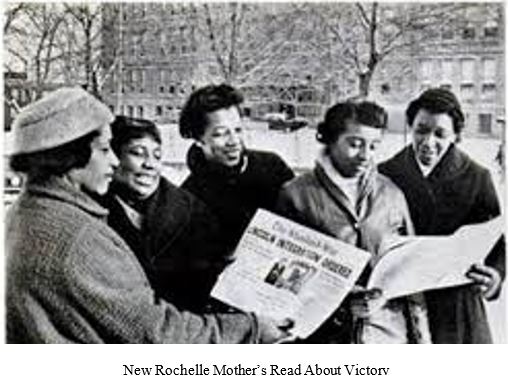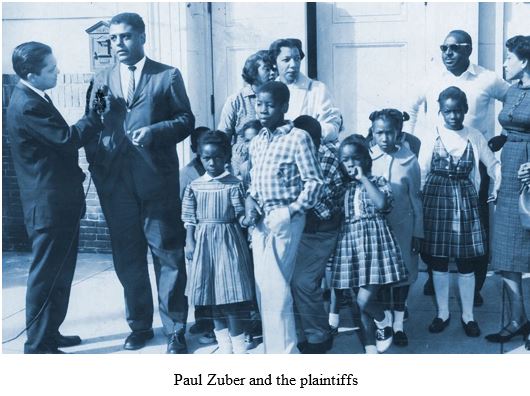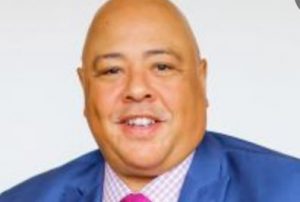Leveling Lincoln: To Level the Playing Field, They Leveled the School
“We are not finished talking about race, we won’t be finished talking about race, until we can talk about it with an educated mind and an open heart. The conversation has come full circle”
Arlene Thompson Fabio
Class of 1977
New Rochelle High School
Leveling Lincoln, a documentary film by filmmaker Arden Lewis, tells the filmmaker’s personal awakening to something she never understood growing up in New Rochelle, New York . . . that New Rochelle was ground zero for the desegregation of school systems in the North . . . a bucolic suburb of New York City once known as “The Little Rock of the North.” It is her awakening that led her to tell the story of Taylor v. Board of Education of New Rochelle and its impact on the first and second wave of children who were impacted by the court’s historic decision.
For some it is hard to imagine New Rochelle as the tipping point for racial upheaval, the center of a political and social maelstrom over racial integration. I mean this is the North . . . it’s New York . . . Westchester County . . . not Alabama . . . but integration of schools in the North can be directly traced to Taylor . The case would become the first case won in a federal court challenging the policies of a Northern school district post Brown v. Board of Education of Topeka. It was a case that would forever change America. A case that had both star power and involvement by many of the luminaries of the civil rights movement such as Ossie Davis, Ruby Dee, Thurgood Marshall, Robert Carter and Constance Baler Motely. The case would also be part of my family history as my father, Paul B. Zuber, was the attorney who would lead a group of parents and children to a court victory that would change the NAACP’s approach to school segregation in the North. Prior to Taylor, the focus of the NAACP Legal Defense Fund was integration of schools in the South. After Taylor, that focus would include an aggressive litigation strategy in the North and West as Taylor would be the foundation to challenging the “neighborhood school” concept instituted by many school districts but designed to segregate students.
Taylor has so much history behind it, a history that seems to be lost in what we teach our children today. I am struck by the comments of Arlene Thompson Fabio about race and the need to continue the dialogue about race. But how do we continue and maintain a fruitful dialogue when we don’t even know the history that has brought us to this point in time? Taylor is a significant case in our history as New Yorkers but do we know much beyond the case itself? Do we even know that desegregation in the North has its roots in New York State?

The seeds of Taylor may have started with Brown, a catalyst that would propel parents into action, but for many African-Americans in New York during the 1950s and 60s the growing seeds of discontent would start with being left out of the political and social dialogue of New York. In 1958 Tammany Hall would unsuccessfully attempt to defeat Congressman Adam Clayton Powell Jr., a challenge based on what Tammany Hall’s political leaders saw as Powell’s disloyalty. You see Powell had the audacity to support candidates in any party who pledged their support to help the African-American community. Leaders such as Assemblyman Lloyd Dickens would stand by Powell but what was clear to him, and men like my father, was that New York was just as segregated as the South and Blacks had no place within the power structure that ran New York. So, they decided to tear down the power structure using the courts and the ballot box as their tool. It was also around that time that activist Mae Mallory, a parent herself, would join my father in challenging the New York City Board of Education in a case known as the Harlem 9, a precursor to Taylor. In that case Mallory and a group of women, all parents, grew tired and angry of the school policies that created inferior schools in New York City and were designed to segregate Black and Brown children. The decision by Judge Justine Polier in favor of the parents would not hold precedent since court of jurisdiction in this case was New York Family Court, but her decision would be plant the seeds for Taylor. Polier would rule that the parents had the right to keep their children out of segregated and substandard schools but more importantly she would rule in favor of the arguments set forth that there were systematic inequalities among the city’s junior high schools that led to Black and Puerto Rican children in Harlem receiving a sub-standard education. This case would lay the ground work for the New Rochelle parents moving forward and my father entering the case.

When I think about this film and the history surrounding it there are several stories that come together and need to be central to understanding our history. There is the obvious historical context. The history of Taylor, the historical backdrop prior and going forward are fascinating. Even a quick glance at the history of Judge Polier, who was the first woman justice in New York, has its own significance as you follow the dots to the case. But this is also a story of two very real aspects of integration. The impact of the first wave of children who would be bused into predominately white schools and the second wave who would know little of the past only that their friends were a diverse group coming from different communities within New Rochelle. The juxtaposition of theses two experience highlights the difficulty and the magnitude by which these policies harmed communities of color.
Lincoln Lincoln also highlights an untold story in the civil rights movement, one that I believe is often neglected, the role of Black women in the struggle for equality. When we look across the United States we have started to see the rise and appreciation of Black women as a key part of the political structure of this county. In New York we have the privilege of having an African-American woman represent us as the New York State Attorney General, an African-American woman who represents us as the Majority Leader of the New York State Senate, and an African-Amercian who represents us as the Majority Leader of the New York State Assembly. Soon we will hopefully see the rise of LatinX women who will take similar roles within our political power structure. But when you look back at Taylor, Brown, the Harlem 9, and other similar cases it was the key role played by women, women of color, that paved the way for change. That is often forgotten, overlooked as we look at our history. I often get praise about my father’s work or I will run into someone who still knows his history, but he could not have won without these women. They and their husbands took a stand but it was these women who had to be out in front, who assumed the burden of public scrutiny to give their children a better life.

So to me this film is an important example of our lost history and what we can learn from our history. As Ms. Thompson-Fabio states, we must discuss race with an educated and open mind. It seems in many regards the issues of today are very similar to the issues of yesterday, just couched in different terms and wrapped in different packages. The history behind Taylor is not unlike the history of most cities in the United States. For me it is time we learn that history and use it to move forward. When Stanford University’s Center for Education Policy Analysis states “the desegregation efforts of the late 1960s and early 1970s did not last; public schools today remain highly segregated both in race and class” I wonder about all those efforts made to change the world, the parents of Taylor and my father. We have come full circle as Ms. Thompson-Fabio states and it is time we learn our history and look to the needed discussions on race with an educated and open mind.
On November 7, 2021 there will be a screening of Leveling Lincoln at the Ossie Davis Theater in New Rochelle, New York. The proceeds from this fundraiser will go to The Lincoln Park Conservancy (TLPC) which is a 501-c3 whose mission is to preserve, document and celebrate the rich history of the Lincoln Avenue Corridor and its connection, both historically and present-day, to the larger community of the City of New Rochelle and beyond. The organization is one that is bringing hope to a community rich in culture and that was at the center of the Taylor case. The film will be mark the launch of the organization’s capital campaign as TLPC expands its presence and programs in the New Rochelle community as it takes residence in a new facility at 387 Huguenot Street that will be the center of programs and outreach to the community. Anyone interested in the screening can RSVP at [email protected] or can support the capital campaign launch at https://www.gofundme.com/f/lincoln-park-conservancy-history-amp-culture-center

Paul W. Zuber is a government affairs specialist with over 20 years of experience. Mr. Zuber is also a Board Member of The Lincoln Park Conservancy and the New York State Industries for the Disabled.

